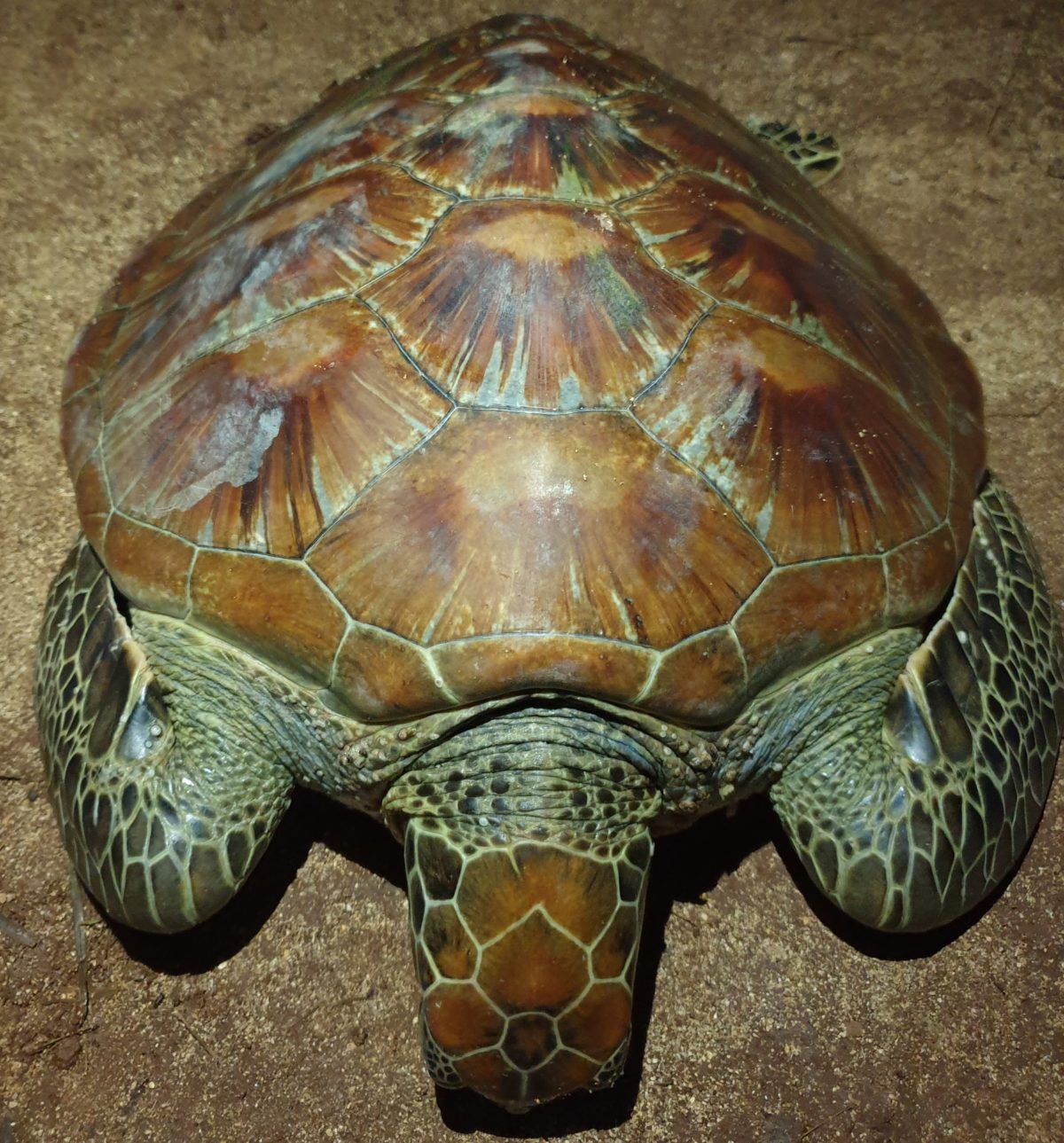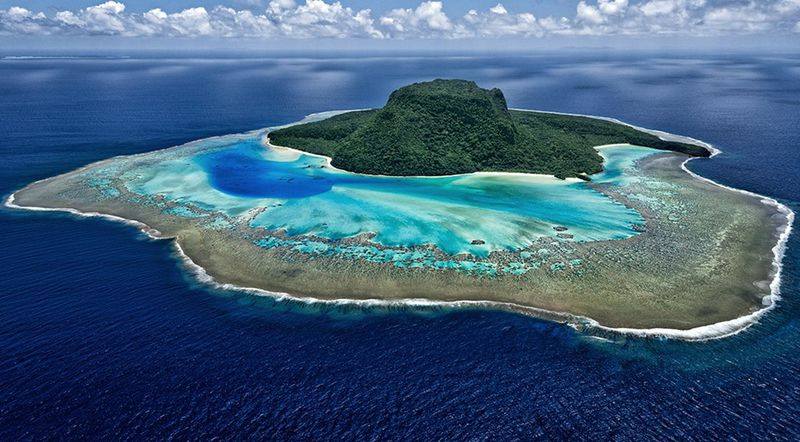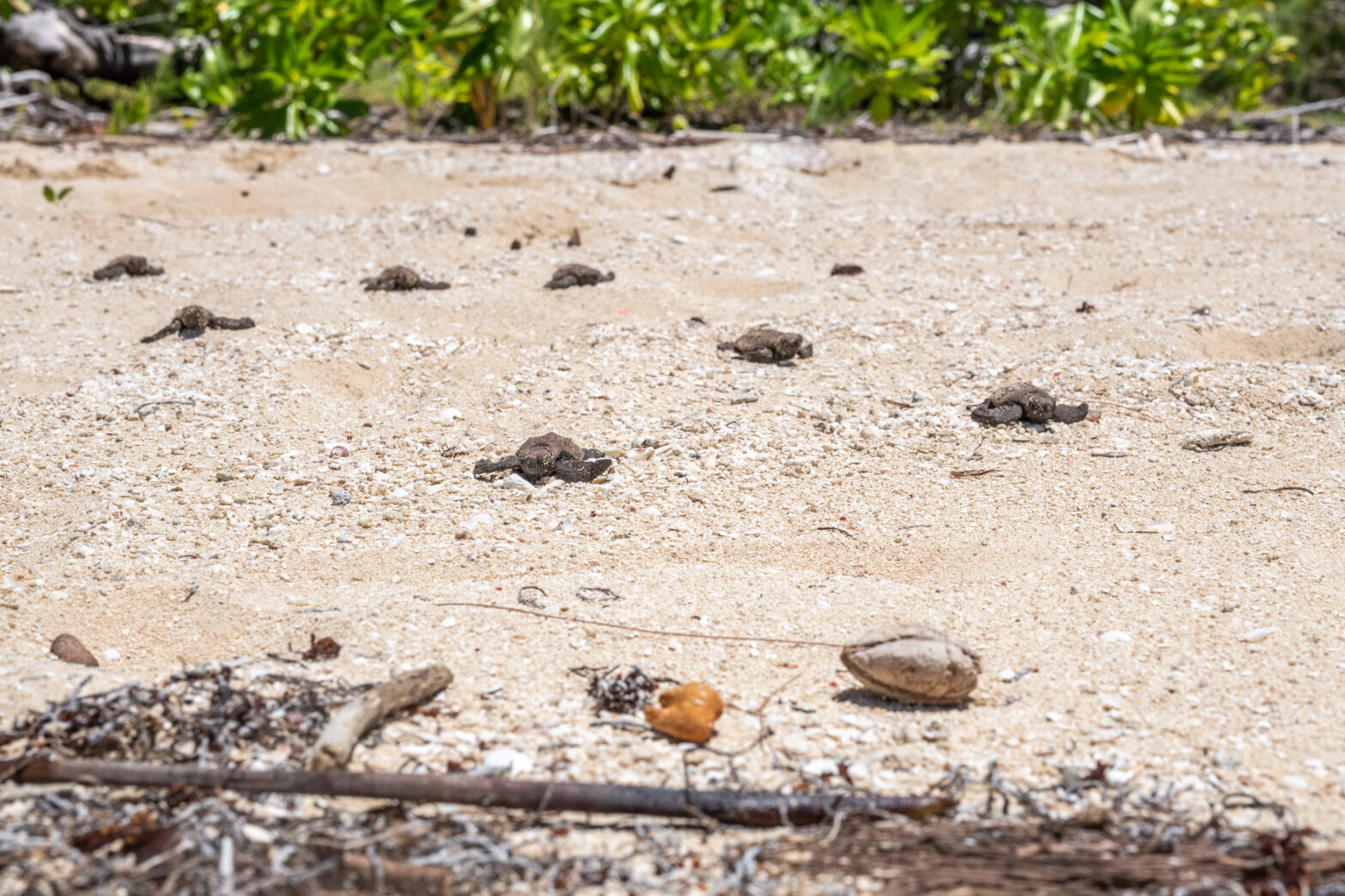WWF Pacific continues to raise awareness and understanding around the plight of marine turtles
Although the plight of turtle populations in the Pacific and Fiji has been highlighted to the public over the years through the illegal harvest lens- continued consumption of their meat and eggs during the breeding season and the loss of their nesting sites on beaches through coastal development, there is increasing concern that Climate Change has the potential to push the slow-growing reptiles to the edge.
Climate Change impacts marine turtles in a number of ways. The first is what is referred to as temperature-dependent sex determination. Unlike other species where sex is determined during fertilization, marine turtles their sex is determined by the temperature of the developing egg once it is laid. If the heat of the sand where it is laid is above 31°C, the majority of the turtles hatchlings will turn out female, below 28°C then the majority are male. Having sand temperature between 28-31°C allows for even proportions of males and females hatching. As Climate Change continues to increase the likelihood of hatchings turning out female it will reduce turtle populations ability to perpetuate. The more obvious and pressing concern for Pacific Islands such as Fiji is the observed loss of beach areas and with it where marine turtles can nest in future. Female marine turtles are unique in the sense that they will only return to the beach from where they first hatched to lay eggs and this behaviour may, unfortunately, be their undoing.
To understand the implications of Climate Change on beach erosion and turtle nesting sites in Fiji, WWF Pacific conducted a beach erosion assessment of 12 known nesting beaches on the islands Yadua, Kia and Katawaqa which lie along the Great Sea Reef to the north of Fiji. The assessment compared the degree of erosion for these nesting beaches over twenty years. The assessment confirmed that for a number of these sites, the beach had retreated landward by at least 10 meters. As female turtles always tend to nest above the high water mark, sea-level rise causing the loss of beach area reduces the area where these turtles can nest. Additionally, the intensity of cyclones affects the sites further. Through records maintained by community turtles monitors in these sites, the Community based sea turtle monitors or the Dau ni Vonu Network established by WWF with the Ministry of Fisheries it was recorded that the TC Cyclone Evan (Cat 4) devastated over 50 turtle nests on Yadua and Kavewa in 2012. In 2016 and 2020 TC Winston (Cat 5) and TC Yasa (Cat 5) similarly destroyed nests and in certain sites made it impossible for hatchings to reach the open ocean with coastal rubble and vegetative debris dumped along the shoreline.
“The findings of the research shows and confirms the negative change caused by Climate Change, increasing intensity of storms, a sea-level rise which all-cause drastic change in beach morphology and ability of turtles to nest and the viability of the nest themselves, by remaining undisturbed allowing eggs to hatch. The situation is further compounded when you note the nesting season falls within Fiji’s cyclone season” said Coastal Fisheries Officer, Laitia Tamata.
He further added “Losing the nesting habitat to erosion due to sea-level rise and frequent strong storms would displace hundreds of these species. Previously the mortality was affected by the hatchlings ability to survive to adulthood without being eaten. Now they face the added obstacle of Climate Change to even be able to hatch out of the nest and reach the ocean.
The three turtle nesting islands portray three different scenarios that are happening on site. Yadua Island in Bua has a population of 90 people and has fully supported turtle protection and management and was actively supporting the Fiji governments turtle moratorium ban from 2009-2018, and still continues to do so. Kavewa island protecting Katawaqa and Nukuvadra nesting islands has moved in the same direction as the Yadua community and enforces and a communal ban on turtle harvest. The success of Kavewa has been due to the community support and active leadership of their Dau ni Vonu. Unfortunately, the situation is different for Kia Island in which there has been no nesting activity for a very long time. The island was previously famous for being a major turtle aggregation site and the observed lack of nesting could be due to a combination of beach erosion and unsustainable harvest of turtle meat and direct take of turtle eggs from the nests over time.
“Our communities in Fiji need to acknowledge that they may be unknowingly contributing to the decline of our local sea turtle populations, which is why we need to continue to raise awareness and understanding around the plight of marine turtles. We understand that marine turtles have formed part of our local diet being a traditional icon for millennia, however, we need to be proactive about managing or limiting their harvest, as the main intention is for us now with the added complication of Climate Change is to help them perpetuate and increase in numbers,” said Mr Tamata
The feature was produced by Tui Marseu at WWF Pacific on 23 May 2021.
Banner: A green turtle Yadua Island, Bua. Photo: WWF Pacific




